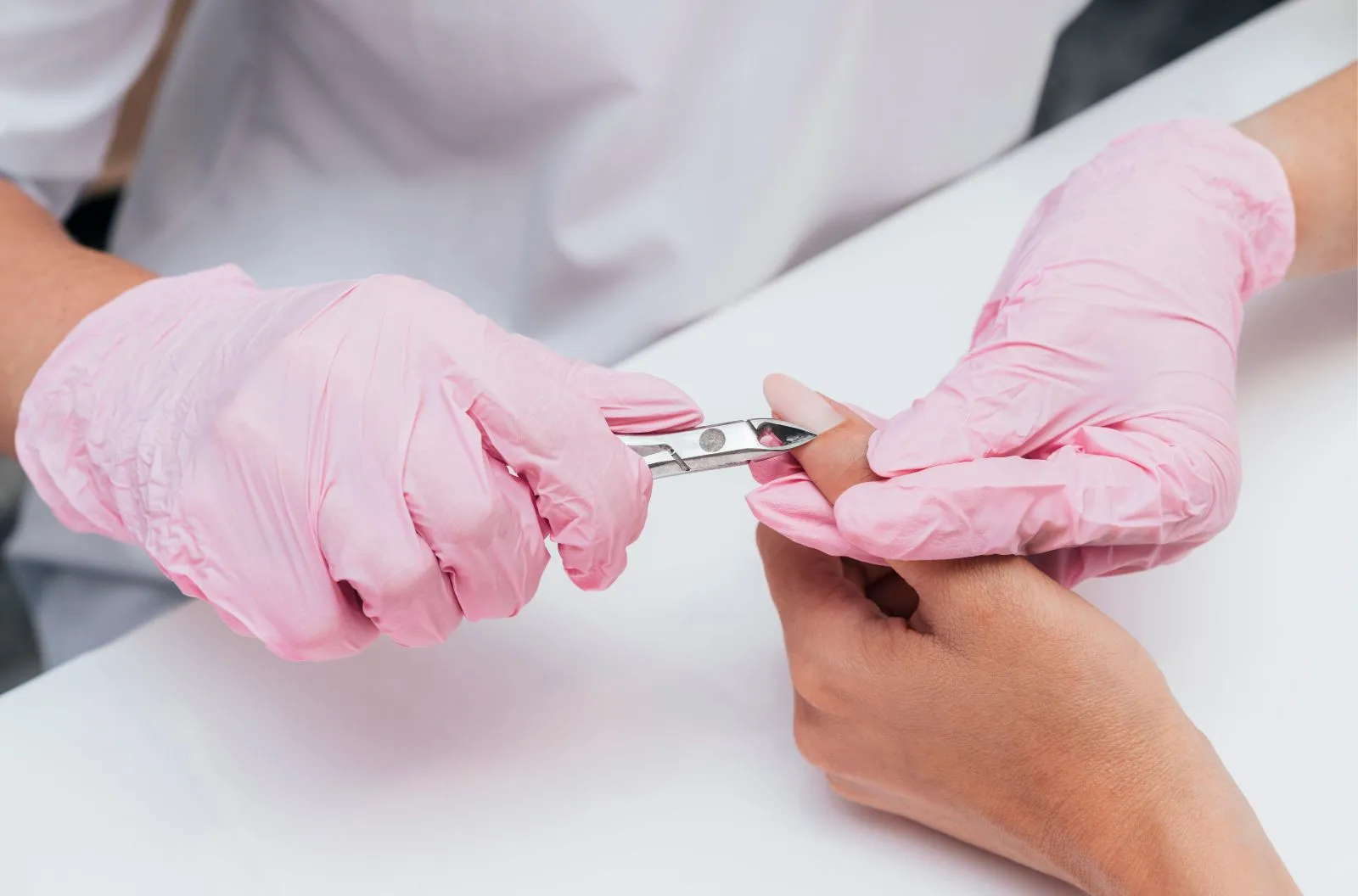TABLE OF CONTENTS
TABLE OF CONTENTS
Removing acrylic nails can be a daunting task, especially if you’re not sure how to do it properly. Whether you’re ready for a new set or just want to give your natural nails a break, knowing the correct removal process is crucial to avoid damage. This guide will cover everything you need to know about acrylic nail removal, including methods, tips, and aftercare.
Understanding Acrylic Nails
Before diving into the removal process, it’s essential to understand what acrylic nails are and why proper removal is crucial. Acrylic nails are made from a mixture of liquid monomer and powder polymer, creating a durable and long-lasting nail enhancement. Improper removal can lead to damage to your natural nails, including thinning, brittleness, and peeling.
Why Remove Acrylic Nails?
There are several reasons you might want to remove your acrylic nails:
Nail Growth: As your natural nails grow, a gap forms between the acrylic and your cuticle, which can look unappealing.
Damage: Over time, acrylic nails can become chipped, cracked, or lifted.
Infection Risk: Gaps between the acrylic and natural nail can harbor bacteria and fungi, leading to infections.
Desire for a Change: You might simply want to give your natural nails a break or try a different nail enhancement.
Methods for Removing Acrylic Nails
There are several methods for removing acrylic nails, ranging from professional salon services to DIY approaches at home. Here are the most common methods:
Professional Removal
Why Choose Professional Removal?
Expert Care: Nail technicians have the experience and tools to remove acrylic nails safely.
Damage Prevention: Professionals can minimize damage to your natural nails.
Convenience: It saves you time and effort.
What to Expect
Soaking: Your nails will be soaked in acetone to dissolve the acrylic.
Gentle Buffing: A nail file or buffer will be used to gently remove the softened acrylic.
Moisturizing: After removal, your nails and cuticles will be moisturized to restore hydration.
At-Home Removal
Supplies Needed
Acetone: 100% pure acetone is most effective.
Cotton Balls: For soaking the nails.
Aluminum Foil: To wrap around the nails.
Nail File and Buffer: For gently removing the acrylic.
Cuticle Pusher: To help lift off the acrylic.
Moisturizer and Cuticle Oil: To hydrate your nails post-removal.
Step-by-Step Guide
Prep Your Nails: File the top layer of your acrylic nails to break the seal.
Soak Cotton Balls in Acetone: Place the soaked cotton balls on your nails.
Wrap in Foil: Wrap each nail in aluminum foil to hold the cotton balls in place.
Wait: Allow your nails to soak for 15-20 minutes.
Check Progress: After soaking, check if the acrylic has softened. If not, soak for a bit longer.
Remove Acrylic: Gently push off the softened acrylic with a cuticle pusher.
Buff and File: Use a nail buffer to smooth out your natural nails.
Moisturize: Apply cuticle oil and hand cream to restore moisture.
Tips for Safe Acrylic Nail Removal
Be Patient: Rushing the process can damage your natural nails.
Use Pure Acetone: Non-acetone removers are not effective for acrylics.
Avoid Prying: Never forcefully pry off acrylic nails as it can cause severe damage.
Hydrate: Keep your nails and cuticles hydrated during and after removal.
Aftercare for Natural Nails
Once your acrylic nails are removed, proper aftercare is essential to restore your natural nails’ health.
Moisturize Regularly
Why It’s Important: Acetone can be very drying, so it’s crucial to replenish moisture.
How to Do It: Apply cuticle oil and a rich hand cream several times a day.
Strengthen Your Nails
Why It’s Important: Acrylic removal can leave your nails weak and brittle.
How to Do It: Use a nail strengthener or hardener to reinforce your nails.
Avoid Immediate Reapplication
Why It’s Important: Your nails need time to recover and strengthen.
How to Do It: Give your nails a break of at least a few weeks before getting another set of acrylics or other enhancements.
Common Questions About Acrylic Nail Removal
Can You Remove Acrylic Nails Without Acetone?
While acetone is the most effective method, you can also use non-acetone nail polish removers, though they will take significantly longer and may not be as effective. Another alternative is to soak your nails in warm, soapy water for an extended period, but this method is less reliable and more time-consuming.
Is It Safe to Peel Off Acrylic Nails?
No, peeling off acrylic nails can cause severe damage to your natural nails, leading to thinning, peeling, and breakage. Always use a proper removal method to protect your nails.
How Often Should You Remove Acrylic Nails?
It’s advisable to remove and replace acrylic nails every 6-8 weeks to maintain nail health and prevent potential damage or infections.
Conclusion
Removing acrylic nails properly is essential to maintain the health and appearance of your natural nails. Whether you choose to have them removed professionally or do it yourself at home, following the right steps and aftercare practices will ensure your nails stay strong and beautiful. Remember to give your nails a break between applications and keep them hydrated and nourished. With proper care, you can enjoy the benefits of acrylic nails without compromising the health of your natural nails.
Contact Us
Questions or looking for a quote?





